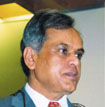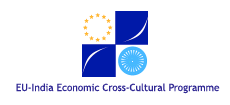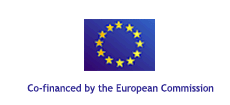
Let me first convey my appreciation to Arsenal Research, particularly Dr. Peter Hacker, for arranging this workshop on the three-year project "Europe and India: Past, Present and Future", co-financed by the European Commission, within the framework of the "EU-India Economic Cross-Cultural Programme".
Traditionally, Indo-Austrian relations have been close and cordial. India and Austria celebrated fifty years of diplomatic relations on 4 November 1999. High level visits have taken place. Pandit Jawaharlal Nehru visited Austria in 1955 and Prime Minister Mrs. Indira Gandhi in 1971 and 1983. Austrian Chancellor Bruno Kriesky visited India in 1980 and Chancellor Fred Sinowatz in 1984. Recently, the President of India, Mr. K.R. Narayanan, paid a State visit to Austria in November 1999 at the invitation of His Excellency Dr. Thomas Klestil, the President of Austria. Frequent visits at ministerial level have also taken place.
Economic relations between India and Austria are growing satisfactorily though there is still large potential to be exploited for mutual benefit. The first Indo-Austrian industrial collaboration agreement was signed as early as 1959. Since then, there have been more than hundred technical collaborations and more than fifty joint ventures with the financial participation of Indian and Austrian firms. VA Tech, Elin, AVL, AT&S, Swaroski are all well-known Austrian companies which have collaborations in India. Austria's direct investment has grown from less than one million dollars in the last decade to 125 million USD in 1998. The total Austrian foreign direct investment during this decade was nearly 700 million USD. The Austrian enterprises involved are small and medium-sized with a high degree of specialised expertise. The major share of joint ventures has been of the technology-licensing type, involving transfer of technology rather than financial investment. The areas of activity include the metallurgical industry, chemicals, machinery, instrumentation and environmental technology. Since India is one of the emerging global markets, there is an enormous scope for industrial collaborations and foreign direct investment in India by Austrian firms.
Indo-Austrian bilateral trade has remained fairly balanced at around ATS 3.4 billion per year since 1996. In 1999, Austrian exports to India were worth about ATS 1,400 million while imports were worth ATS 2 billion. Indian and Austrian trade cannot be fully determined since entry of Indian exports consist mainly of garments, textiles, leather products, footwear, gems and jewellery, computer software and chemicals. Austrian exports are machinery, paper, iron and steel, transport equipment, etc.
Traditionally, India and EU have excellent relations because of their shared values and democratic systems. The EU is a great economic power in the global market while India is a large country with a population of nearly a billion people. India is undeniably full of contradictions in that there are certain areas with relatively high scientific and technological growth while large sections of the population suffers from poverty. The Indian economy has been started progressing steadily after economic liberalisation was launched in 1991. Annual economic growth since then has been around 6%. This figure is expected to increase in the future. In certain areas, like computer software and knowledge-based industries, India has earned a name for itself in the global economy but, at the same time, the country needs enormous input, including foreign direct investment, to make other sectors of its economy more competitive. Co-operation between the EU and India could certainly play a critical role in strengthening the world economy and ensuring a better future for humankind by promoting the shared values of freedom, democratic institutions and equitable economic growth.

